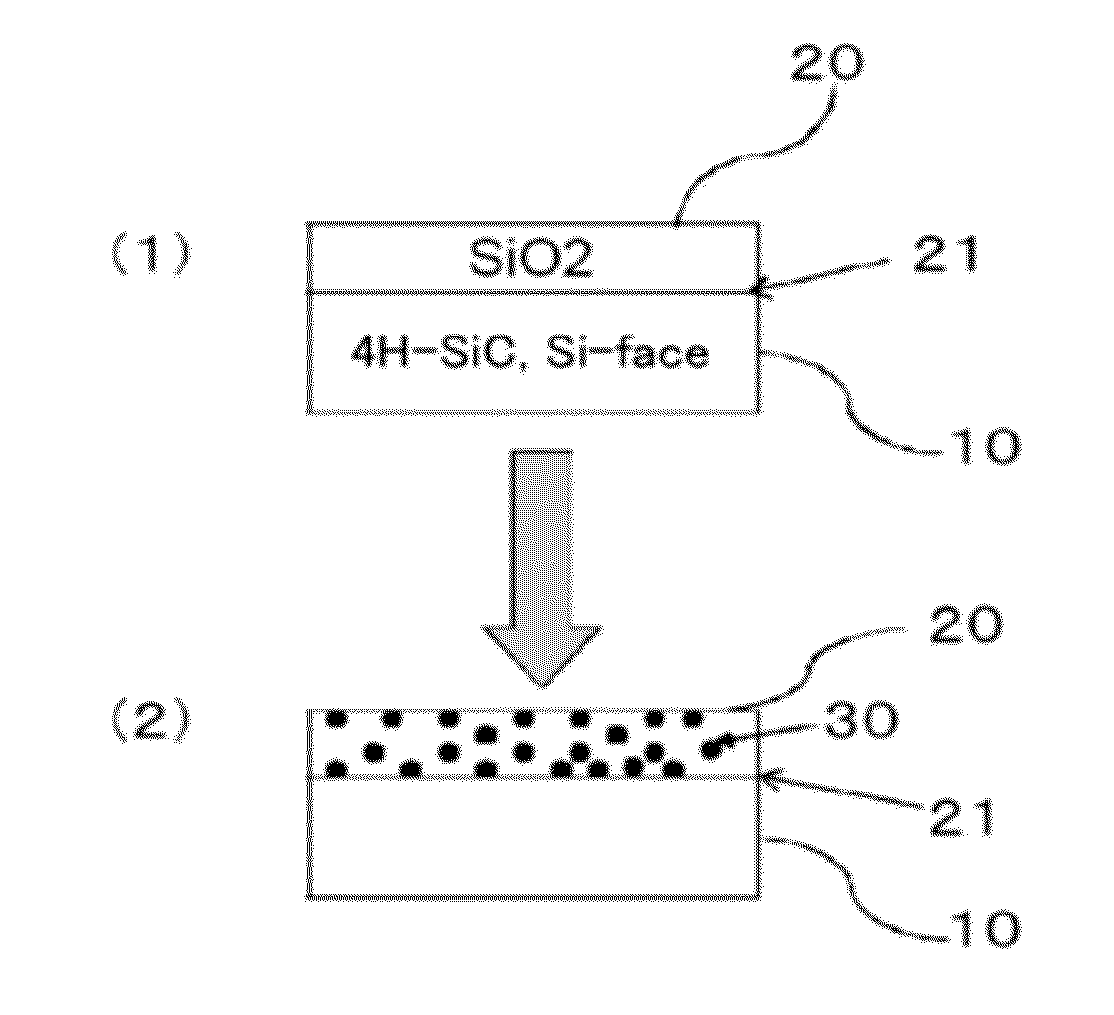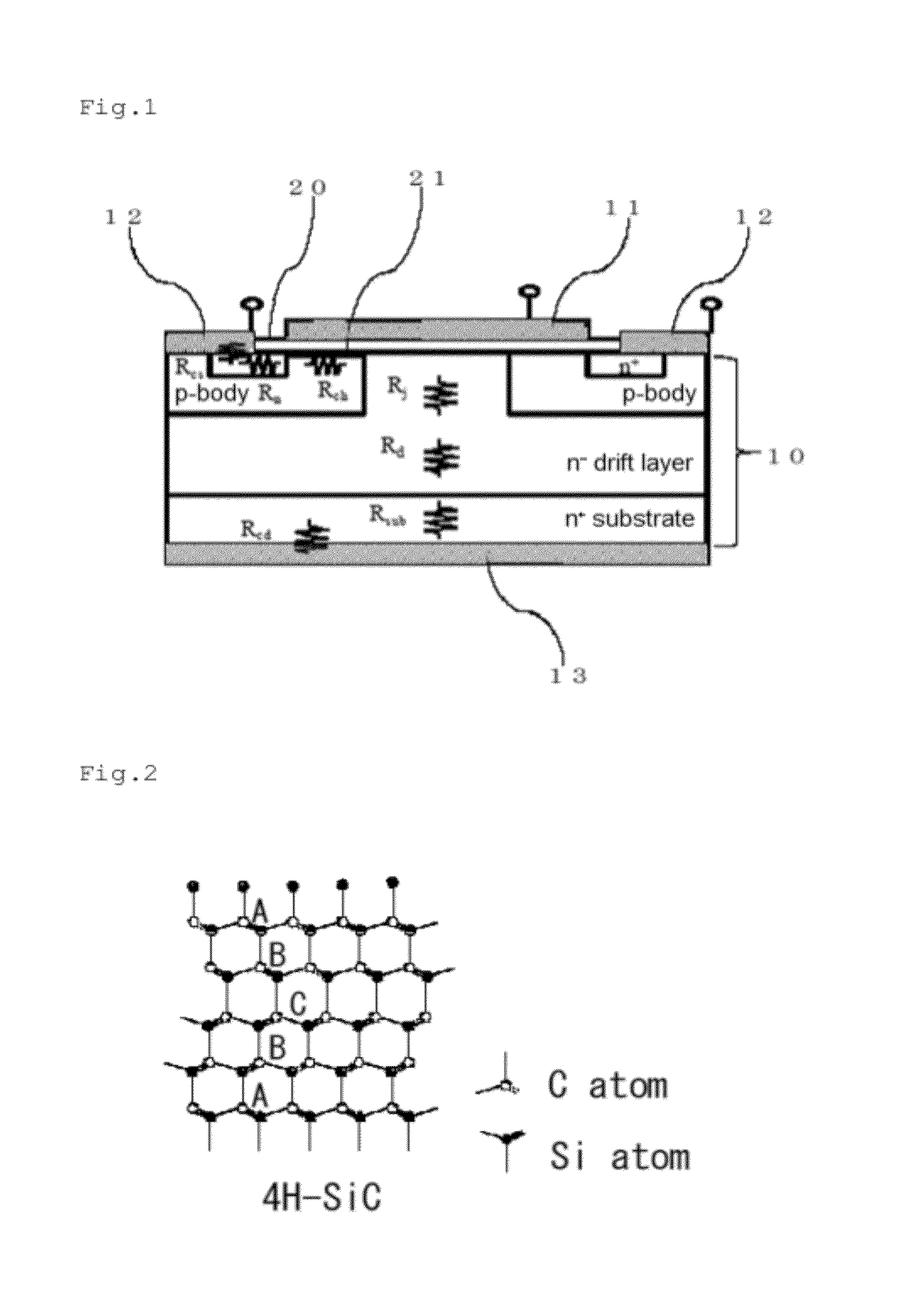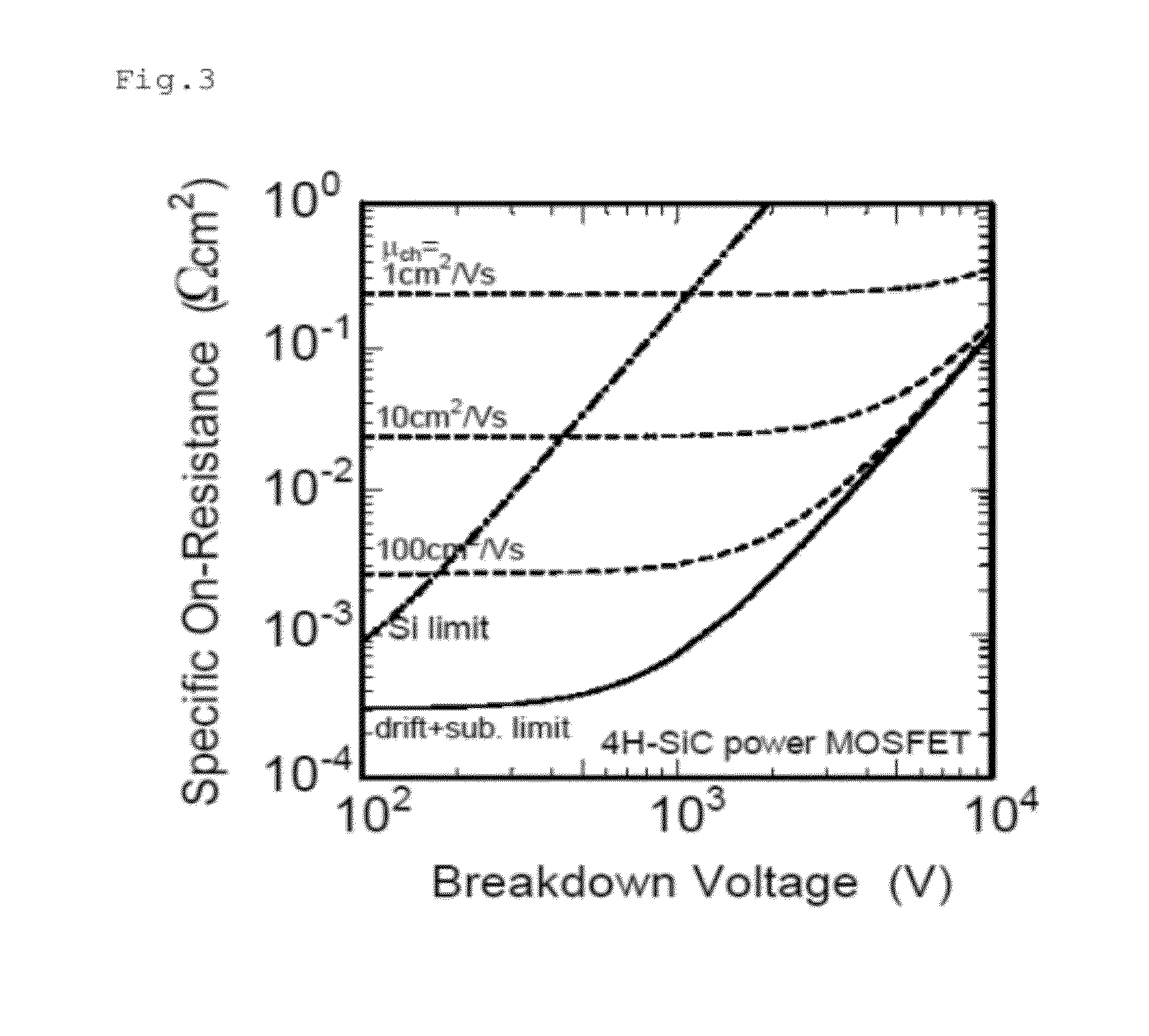Sic semiconductor element and manufacturing method for same
a semiconductor element and manufacturing method technology, applied in the field of semiconductor element and manufacturing method for same, can solve the problems of increased power consumption, low channel mobility of mis(mos)fet of sic, etc., to improve channel mobility, reduce interface defects (interface state density), and improve channel mobility.
- Summary
- Abstract
- Description
- Claims
- Application Information
AI Technical Summary
Benefits of technology
Problems solved by technology
Method used
Image
Examples
embodiment 1
[0076]The manufacturing method of a first example is described using FIGS. 4 and 5. FIGS. 4 show a state where a gate insulating film 20 is formed on an SiC semiconductor 10 and phosphorus is added to that gate insulating film 20. Here is illustrated an example using an oxide film (SiO2) as an insulating film. In FIG. 4 (2), phosphorus 30 has reached up to an interface 21 between the insulating film and SiC. By the phosphorus 30 having reached up to the interface 21 between the insulating film and SiC, interface defects can be reduced and the channel mobility can be improved.
[0077]Phosphorus is added to the insulating film on the SiC substrate in a procedure shown in FIG. 5. First, the insulating film is formed on the SiC substrate (S10) and then phosphorus is added to the insulating film (S20). Subsequently, a diffusing step is performed (S25) to cause phosphorus to reliably reach the interface 21 between the insulating film and the SiC.
[0078]The procedure of adding phosphorus to t...
PUM
 Login to View More
Login to View More Abstract
Description
Claims
Application Information
 Login to View More
Login to View More - R&D
- Intellectual Property
- Life Sciences
- Materials
- Tech Scout
- Unparalleled Data Quality
- Higher Quality Content
- 60% Fewer Hallucinations
Browse by: Latest US Patents, China's latest patents, Technical Efficacy Thesaurus, Application Domain, Technology Topic, Popular Technical Reports.
© 2025 PatSnap. All rights reserved.Legal|Privacy policy|Modern Slavery Act Transparency Statement|Sitemap|About US| Contact US: help@patsnap.com



